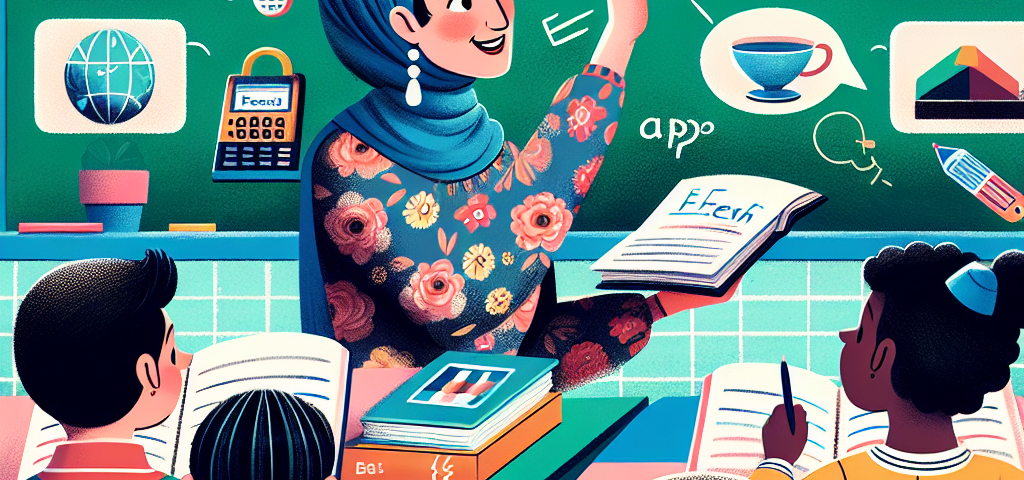
Discovering French Culture: Enriching Primary Lessons Beyond Language
May 31, 2025
Spotlight on Innovation: How French Secondary Schools Are Adapting to Change
May 31, 2025
Teaching French to primary students can be an enriching experience, paving the way for cultural appreciation and language proficiency from an early age. However, engaging young learners requires creativity and effective resources. Here are five must-have resources that can elevate your French language classroom and make learning enjoyable for your students.
1. Interactive Language Apps
Apps like Duolingo for Kids, Babel, and Rosetta Stone Kids provide interactive and gamified experiences for young learners. These platforms often feature colorful graphics, rewarding players for progress and encouraging a sense of achievement. Language games, quizzes, and storytelling elements help reinforce vocabulary and grammar in a fun way. Moreover, these apps can complement classroom teaching and allow students to practice outside of school on their own.
Why they work:
- Gamification: Makes learning fun and competitive.
- Variety of Activities: Engages students through various forms of interaction.
- Accessibility: Can be used at home or in class, providing flexibility for students to learn at their own pace.
2. French Picture Books
Picture books like "Bonjour, Simon!" by Elise Broach, or "La Petite Souris et le Poussin" by Lili Pilli, can introduce students to the French language through engaging stories and beautiful illustrations. These books often have repetitive phrases and simple vocabulary, making them perfect for young learners. Reading aloud in French helps improve pronunciation and listening skills while fostering a love for the language.
Why they work:
- Visual Learning: Accompanying illustrations make it easier for students to understand context.
- Storytelling: Engages students’ imaginations, enhancing their interest in language.
- Cultural Exposure: Introduces students to French culture through themes and settings in stories.
3. Flashcards and Visual Aids
Flashcards can be powerful tools for building vocabulary. Resources like Quizlet allow teachers to create digital flashcards that students can easily access and review. Complement these with colorful posters and visual aids around the classroom, featuring common phrases, numbers, colors, and everyday objects in French.
Why they work:
- Repetition: Aids memory retention through visual reinforcement.
- Interactive Learning: Flashcards can be used in various games, promoting active participation.
- Personalization: Teachers can customize flashcards to fit specific lesson plans or vocabulary.
4. French Songs and Chants
Music is a powerful medium for learning a new language. Utilizing French songs, such as "Frère Jacques" or "Au claire de la lune," can make vocabulary lessons memorable. Websites like Super Simple Songs offer catchy tunes that cover various themes from numbers to animals. Incorporating songs into your lessons encourages repetition and helps students with pronunciation and rhythm.
Why they work:
- Engagement: Kids love to sing and move, which keeps them interested in learning.
- Memory Aid: Tunes make it easier to remember vocabulary and phrases.
- Cultural Insight: Through songs, students can explore the rhythm and nuances of French culture.
5. Language Games and Kits
Resource kits like "Les petits explorateurs" or card games specifically designed for learning French can be incredibly beneficial. These kits often include games focused on vocabulary, grammar, and conversation skills, which can be played in pairs or small groups, promoting cooperation and communication among students.
Why they work:
- Hands-On Learning: Engages students through tactile and social activities.
- Team Learning: Encourages collaboration and makes learning a group effort.
- Variety: Keeps lessons fresh and exciting with different game formats.
Conclusion
Teaching French to primary students should be an enjoyable and enriching experience. By incorporating interactive language apps, engaging picture books, useful flashcards, catchy songs, and fun games, educators can create a dynamic learning environment that captivates young learners. These resources not only enhance language acquisition but also spark a lifelong interest in cultural exploration. Happy teaching!

